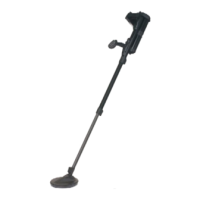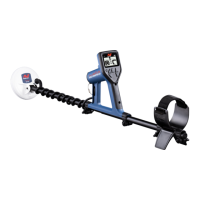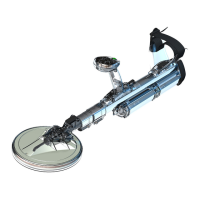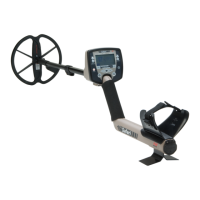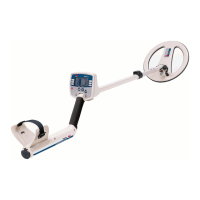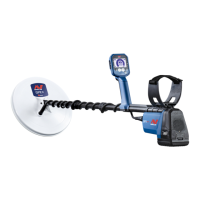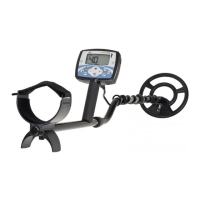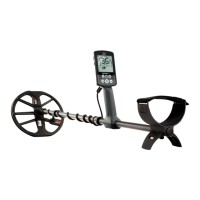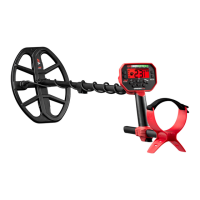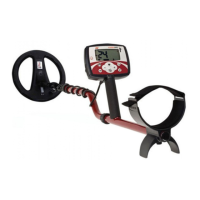CONTENTS
29
Target Trace (Continued)
Electromagnetic interference (EMI)
EMI often appears as a concentrated smudge near IDs 0 and 2, similar to a very low
conductive coin. There are often some accompanying random scattered Traces.
Large or complex ferrous objects
Ferrous objects with complex shapes can often create unusual shapes on the target trace, and like bottle caps, are usually
variable with orientation.
Such targets often have ferrous material properties, but also have large cylindrical shapes (e.g. bolt heads) with highly
conductive properties. In some orientations, these can result in a target trace that slants down and to the right, from the
upper ferrous region into the non-ferrous region.
Sweeping over the complex target from different directions while checking the target trace can provide a better indication
of the ferrous properties of the target.
A thick rusted iron bolt falsing in
one orientation.
The same thick rusted iron bolt
checked from a different direction,
more clearly showing it is ferrous.
A thick iron nail with large square
head falsing.
A screw with a large hex
head falsing.
Non-ferrous objects masked by nearby iron
Non-ferrous objects with nearby iron trash can also create an unusually shaped Target Trace.
Often iron trash is much stronger and dominates the detection, pulling the target trace towards the ferrous region.
However with the superior target separation of MANTICORE, the non-ferrous target can often be seen to pull the target
trace just into the non-ferrous region, unmasking the non-ferrous detection.
A medieval cut quarter farthing
(coin) next to an iron nail. Note how
the coin pulls the target trace down
and in the direction of the correct ID
for the coin.
A medieval cut quarter
farthing (coin).
An iron nail on its own.
Coin buried deep in mineralised ground
Mineralised ground creates special challenges for discrimination, because the detector sees the target as a mixture of
signals from both target and ground response. This can create three dark Traces; one in the upper ferrous region, one on
the centre line where the coin would appear if detected in air, and one in the lower ferrous region. They are sometimes
connected by a vertical line.
A hammered coin (low conductor) buried deep in
highly mineralised soil, showing a solid Target ID, but
uncertain ferrous characteristics due to being mixed
with the ground signal response.
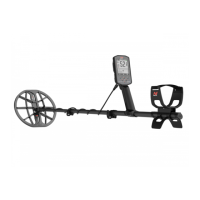
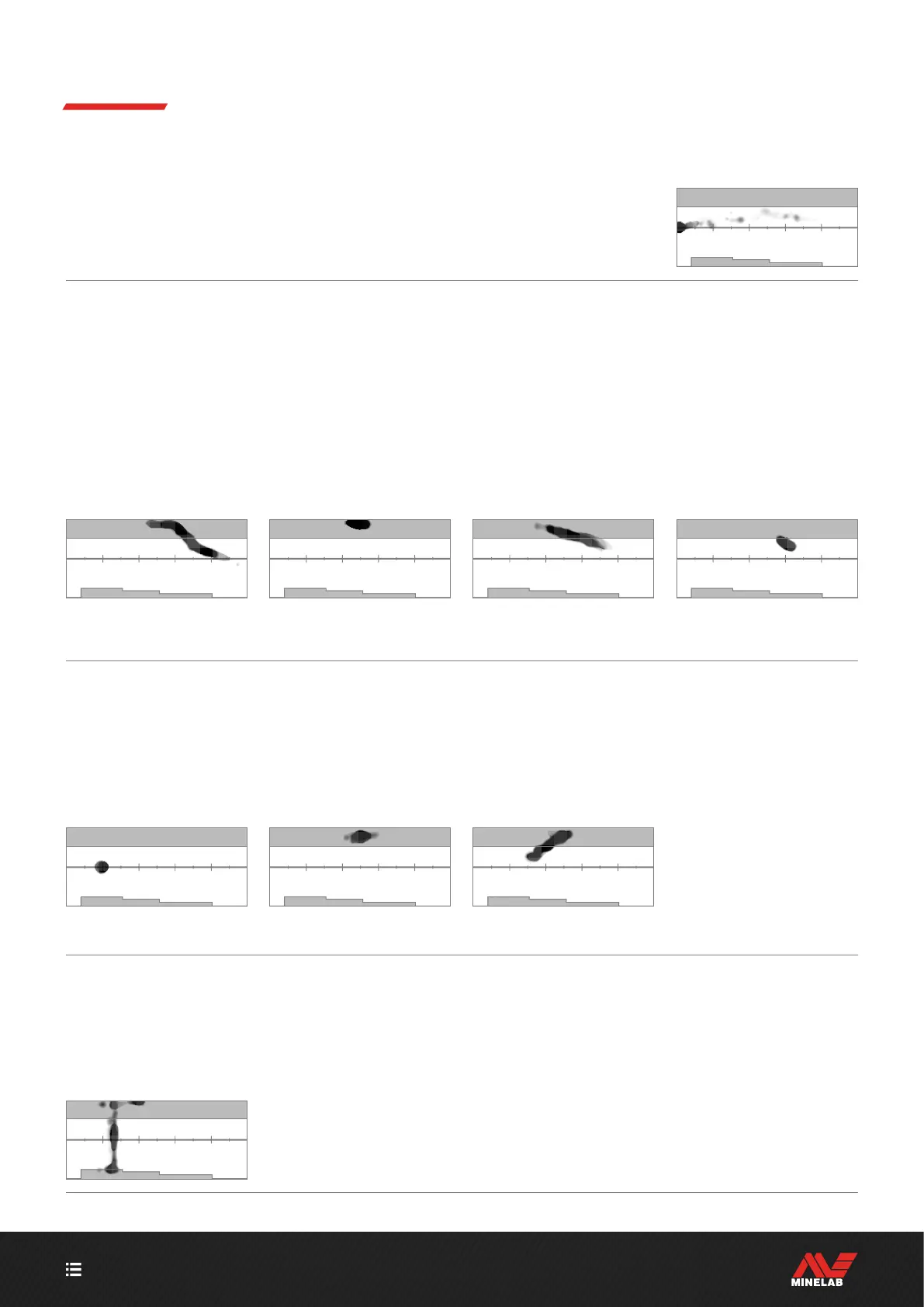